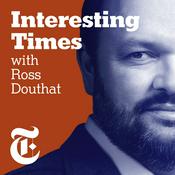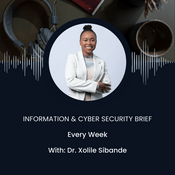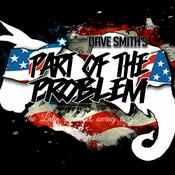868 episodes

Spot the Next Kohberger? FBI Agent's Red Flags Warning + Investigation Secrets Revealed! | True Crime Breakdown
2025/12/26 | 1h 3 mins.
Could you spot the next Bryan Kohberger before he snaps? Retired FBI Special Agent drops urgent intel in this must-watch combo from Hidden Killers With Tony Brueski. First up: Prevention radar—decode the "quiet genius" tells like obsessive crime surveys, social blackouts, heroin shadows, and ego flares that screamed danger at WSU, all red flags ignored before the #Idaho4 stabs. Then, the takedown tale: Beyond DNA hits and phone ghosts, uncover how feds chased his white Elantra trails, Amazon premed slips, and predator patterns that crushed third-party alibis and autism outs. This powerhouse unpacks the crushers: Sheath evidence slams, forensic fumbles, and why his criminology smarts backfired into a guilty cage. FBI lens: Train your gut on isolation ticks and violence vibes to stop the stalkers in their tracks. True crime guardians, arm yourself: From hunt highs to hindsight horrors, it's the playbook on outsmarting monsters. One missed cue cost four lives—what's yours? #BryanKohberger #IdahoMurders #SpotAKiller #FBIInsights #TrueCrime #KohbergerRedFlags #Idaho4 #HiddenKillers #CrimeBreakdown #InvestigationSecrets #TrueCrimePodcast Want to comment and watch this podcast as a video? Check out our YouTube Channel. https://www.youtube.com/@hiddenkillerspod Instagram https://www.instagram.com/hiddenkillerspod/ Facebook https://www.facebook.com/hiddenkillerspod/ Tik-Tok https://www.tiktok.com/@hiddenkillerspod X Twitter https://x.com/tonybpod Listen Ad-Free On Apple Podcasts Here: https://podcasts.apple.com/us/podcast/true-crime-today-premium-plus-ad-free-advance-episode/id1705422872

DoorDash Driver's Shocking Kohberger Sighting: Eyewitness Nightmare at Idaho Murder House? | 2025 Review
2025/12/25 | 39 mins.
Relive the jaw-dropping DoorDash driver twist that rocked the Bryan Kohberger saga in this pulse-pounding deep dive from Hidden Killers 2025 Year in Review – a look back at the biggest cases of the year. Back in June 2025, a DUI arrest bodycam confession ignited true crime chaos: A delivery driver claimed she parked next to Kohberger's white Hyundai Elantra outside the off-campus house minutes before the November 2022 Idaho student murders. Was it him lurking in the shadows, or a case of mistaken identity? As Kohberger now rots on four life sentences post-July guilty plea, we dissect her chilling account—delivering food to victim Xana Kernodle around 4 a.m., spotting a suspicious figure by a white car matching his, and the eerie timeline clash with phone pings and security cams. This Hidden Killers With Tony Brueski: True Crime Today retrospective uncovers the frenzy: Prosecutors subpoena her records, defense scrambles to debunk as "unreliable," and leaks reveal she ID'd Kohberger from photos during her 2024 arrest. Dive into the red flags—her delayed report, alcohol-fueled recall, and how it bolsters the prosecution's premeditation narrative alongside the Ka-Bar sheath DNA and Amazon buys. But does this "mystery witness" (aka "MM" in docs) crack the case wide open, or fuel third-party theories? We break down bodycam footage breakdowns, expert takes on eyewitness fallibility, and why it amplified pre-trial media storms leading to the Boise venue shift. Fast-forward to 2025 fallout: This bombshell fed the Goncalves' November WSU lawsuit, slamming university oversight of Kohberger's creepy campus behavior. True crime obsessives, this is gold—probe delivery dash cams, victim timelines, and if one late-night drop-off sealed a killer's fate. Packed with unfiltered analysis, it's your essential rewind on the #Idaho4 enigma. #BryanKohberger #IdahoMurders #DoorDashDriver #Idaho4 #TrueCrime #KohbergerWitness #HiddenKillers2025 #CrimeYearInReview #EyewitnessDrama #ForensicTwist #XanaKernodle #TrueCrimePodcast #MurderMystery Want to comment and watch this podcast as a video? Check out our YouTube Channel. https://www.youtube.com/@hiddenkillerspod Instagram https://www.instagram.com/hiddenkillerspod/ Facebook https://www.facebook.com/hiddenkillerspod/ Tik-Tok https://www.tiktok.com/@hiddenkillerspod X Twitter https://x.com/tonybpod Listen Ad-Free On Apple Podcasts Here: https://podcasts.apple.com/us/podcast/true-crime-today-premium-plus-ad-free-advance-episode/id1705422872

Howard Blum's Wild Kohberger Theories + FBI Chief's Guilty Plea Shock: Family Secrets Exposed! | 2025 True Crime
2025/12/25 | 1h 27 mins.
🔍 What does true crime guru Howard Blum now believe about Bryan Kohberger's fractured family and twisted motives? Paired with retired FBI behavior chief's razor-sharp breakdown of that abrupt July 2025 guilty plea – in this riveting rewind from Hidden Killers 2025 Year in Review – a look back at the biggest cases of the year. Blum unpacks the emotional rifts: Dad's uneasy post-murder road trip, sibling silences, and how Kohberger's criminology obsession birthed the #Idaho4 nightmare – sheath DNA damns, Amazon premed slips, and WSU stalking ghosts that universities ignored. FBI vet dissects the plea pivot: Ego-crushing evidence avalanche forced the "guilty" gasp, dodging death row but igniting family "betrayal" howls over the 48-hour deal. This Hidden Killers With Tony Brueski: True Crime Today mashup hits November 2025 fresh: Yesterday's Goncalves WSU lawsuit blasts overlooked red flags, fueling restitution wars – $30K fund freezes and urn payback snarls from the November 5 hearing. Autism alibis? Shredded. Third-party mirages? Vanished. True crime truth-hunters, this duo delivers: Insider theories meet behavioral bombs on a killer's collapse. Did family fractures forge the fiend? Your essential 2025 decode of dodged executions and lingering lies in the Idaho inferno. #BryanKohberger #IdahoMurders #HowardBlum #FBIBreakdown #TrueCrime #KohbergerPlea #Idaho4 #HiddenKill Want to comment and watch this podcast as a video? Check out our YouTube Channel. https://www.youtube.com/@hiddenkillerspod Instagram https://www.instagram.com/hiddenkillerspod/ Facebook https://www.facebook.com/hiddenkillerspod/ Tik-Tok https://www.tiktok.com/@hiddenkillerspod X Twitter https://x.com/tonybpod Listen Ad-Free On Apple Podcasts Here: https://podcasts.apple.com/us/podcast/true-crime-today-premium-plus-ad-free-advance-episode/id1705422872

Inside Kohberger’s Breakdown: Complaints, Threats & Serial Killer Letters
2025/12/13 | 31 mins.
Bryan Kohberger spent years studying criminal behavior, rigid thinking patterns, and how violent offenders survive behind bars. But just months into four consecutive life sentences, the reporting out of the Idaho Maximum Security Institution tells a very different story. Instead of a calculated mastermind adjusting to prison life, we’re seeing a man unraveling under pressure — filing grievances, demanding transfers, and issuing warnings that staff say look more like manipulation than crisis. In this episode, we break down the nonstop stream of complaints Kohberger has reportedly filed since arriving on J-Block, one of the most restrictive housing units in the entire facility. From accusations that inmates are taunting him through the vents, to disputes over vegan meals, to frustration with JPay and restroom access, the pattern paints a picture of someone struggling with the basic realities of incarceration. Former detectives and correctional insiders say he’s making himself a target — and the inmates have noticed. We also examine new reporting that Kohberger has allegedly been reaching out to serial killers across the country, attempting to make connections even while threatening self-harm if he isn’t moved to a quieter unit. The contradictory behavior has raised questions among professionals who see it as an effort to control the narrative and regain status he no longer has. And yes — we cover the leaked prison footage confirmed as authentic by the Idaho Department of Correction, the consequences of that breach, and what it reveals about his environment today. Most importantly, we remember the four lives lost: Kaylee Goncalves, Madison Mogen, Xana Kernodle, and Ethan Chapin. While Kohberger files grievances, their families continue to live with an unimaginable reality. Subscribe for daily coverage, expert analysis, and the stories behind the headlines. #BryanKohberger #IdahoFour #HiddenKillers #TrueCrimeToday #PrisonLife #CrimeAnalysis #IdahoCase #JusticeForTheVictims #TrueCrimeCommunity #CrimeNews Want to comment and watch this podcast as a video? Check out our YouTube Channel. https://www.youtube.com/@hiddenkillerspod Instagram https://www.instagram.com/hiddenkillerspod/ Facebook https://www.facebook.com/hiddenkillerspod/ Tik-Tok https://www.tiktok.com/@hiddenkillerspod X Twitter https://x.com/tonybpod Listen Ad-Free On Apple Podcasts Here: https://podcasts.apple.com/us/podcast/true-crime-today-premium-plus-ad-free-advance-episode/id1705422872

Kohberger’s Prison Meltdowns, Serial-Killer Outreach & the Anna Kepner Case | With Shavaun Scott
2025/12/12 | 52 mins.
This episode of Hidden Killers brings together three troubling, psychologically revealing stories — each offering a unique window into manipulation, identity, and the way families and offenders construct narratives to protect themselves. We begin with Bryan Kohberger’s reported self-harm threats inside Idaho Maximum Security Institution. He’s allegedly telling staff he’ll “harm himself” if they don’t move him out of J-Block — a threat strategically worded, attached to conditions, and deployed after earlier complaints didn’t get traction. Psychotherapist Shavaun Scott breaks down the psychology behind conditional threats, escalation patterns, and why institutions must take every claim seriously even when manipulation is suspected. From there, we move into Kohberger’s serial-killer outreach — his attempts to connect with high-profile offenders rather than family or supporters. Shavaun helps us understand what this reveals about identity, belonging, status, and the collapse of the image he expected to maintain inside prison. When inmates respond with contempt instead of fascination, the psychological fallout can be profound. Finally, we shift to the Anna Kepner cruise-ship case, where conflicting accounts from adults and teens highlight the distance between family myth and emotional reality. Parents describe harmony; teens describe aggression. Shavaun walks us through why teenagers often perceive danger more clearly than adults, how aggression becomes normalized, and why blended families are especially vulnerable to maintaining a narrative that doesn’t match the truth. Across all three segments, one theme emerges: when reality doesn’t match the story someone needs to believe, the mind works overtime to bridge the gap — sometimes through manipulation, sometimes through denial, and sometimes through sheer grandiosity. #HiddenKillers #BryanKohberger #AnnaKepner #ShavaunScott #TrueCrimePodcast #PrisonPsychology #FamilyDynamics #SerialOffenders #TonyBrueski #CriminalMindset Want to comment and watch this podcast as a video? Check out our YouTube Channel. https://www.youtube.com/@hiddenkillerspod Instagram https://www.instagram.com/hiddenkillerspod/ Facebook https://www.facebook.com/hiddenkillerspod/ Tik-Tok https://www.tiktok.com/@hiddenkillerspod X Twitter https://x.com/tonybpod Listen Ad-Free On Apple Podcasts Here: https://podcasts.apple.com/us/podcast/true-crime-today-premium-plus-ad-free-advance-episode/id1705422872
More News podcasts
Trending News podcasts
About The Idaho Murders | The Case Against Bryan Kohberger
Listen to The Idaho Murders | The Case Against Bryan Kohberger, TRIGGERnometry and many other podcasts from around the world with the radio.net app

Get the free radio.net app
- Stations and podcasts to bookmark
- Stream via Wi-Fi or Bluetooth
- Supports Carplay & Android Auto
- Many other app features
Get the free radio.net app
- Stations and podcasts to bookmark
- Stream via Wi-Fi or Bluetooth
- Supports Carplay & Android Auto
- Many other app features


The Idaho Murders | The Case Against Bryan Kohberger
download the app,
start listening.




































